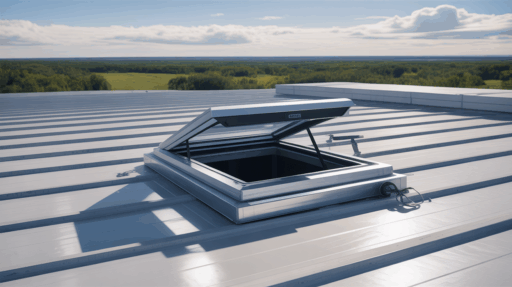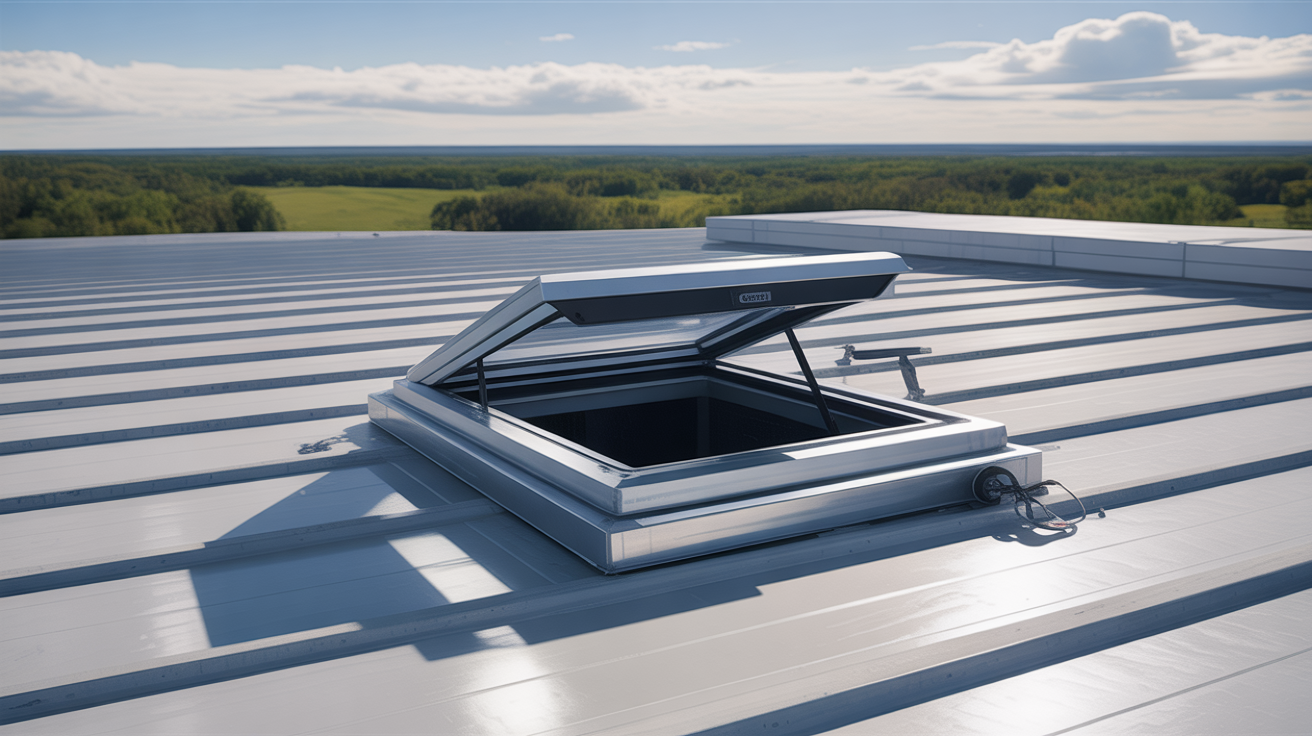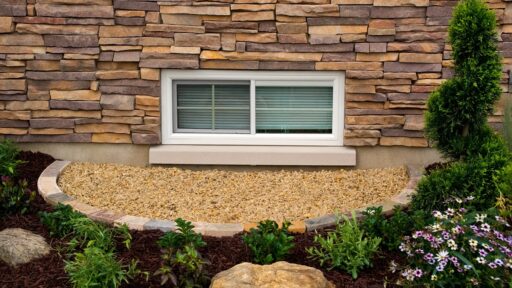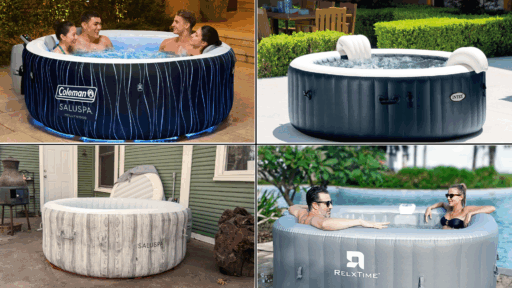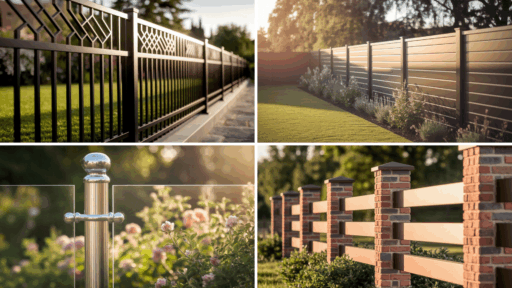Accessing the roof for routine inspections, seasonal maintenance, or unexpected repairs often comes with its fair share of challenges. From hauling up ladders to navigating narrow rooflines, these tasks can quickly become unsafe or inconvenient. That’s where roof access hatches come in.
These simple yet efficient solutions make it easier to reach the roof. They are designed to blend in with their surroundings and offer functionality without ruining the roof’s look. They’re a smart, long-term investment in construction and renovation projects.
This article explores how roof access hatches enhance exterior functionality while keeping the roofline sleek and clean.
The Role of Roof Access in Today’s Buildings
Buildings today are often equipped with essential systems placed on or near the rooftop: HVAC units, solar panels, and drainage systems, to name a few. That means regular access is necessary for:
- Inspections to spot early signs of wear, leaks, or other issues
- Maintenance tasks like cleaning gutters or checking equipment
- Repairs after storms or when damage is discovered
- Emergency egress in some multi-unit or commercial buildings
Traditional access methods, like ground-level extension ladders or scaffolding, come with obvious risks—unstable footing, time-consuming setups, and potential damage to the building façade. In some cases, they are not ideal for those who need to bring tools or materials up and down safely. These makeshift methods can slow down the process and put workers at risk.
Roof access hatches eliminate these challenges. They offer a fixed, secure point of entry that streamlines tasks, enhances safety, and makes life easier for maintenance crews and building occupants.
Core Features of Roof Access Hatches
A roof access hatch is a weatherproof door built into the roof that opens upward, providing safe and direct entry to the roof area from inside the building.
Key features include:
- Insulated covers that help reduce heat loss or gain
- Weatherproof seals to block out rain, snow, and wind
- Pre-installed curbs that elevate the hatch above the roofline for better drainage and sealing
There are several types to choose from, including:
- Single-leaf hatches for standard access
- Double-leaf for larger openings or equipment transport
- Fire-rated models for code compliance
- Thermally broken versions to reduce heat transfer and condensation
- Domed models—like the BAC-GS roof hatch—for increased natural light and added water runoff
Most roof hatches work well with flat or low-slope roofs and can be tailored to fit the roofing material, whether asphalt, membrane, or metal.
Benefits That Go Beyond Access
Roof hatches are more than just a convenience—they add value to the building.
Enhanced Worker Safety
Instead of balancing on ladders, crews can climb up from inside using fixed ladders or stairs and emerge onto the roof in a controlled space. Adding handrails or fall protection around the hatch further improves safety.
Improved Energy Efficiency
Insulated covers and sealed designs prevent drafts, heat loss, or moisture intrusion—all of which help regulate indoor temperatures and reduce energy costs.
Simplified Maintenance
Easy access encourages consistent inspections, which leads to fewer unexpected repairs and a longer lifespan. Regular maintenance also helps with warranty compliance and asset preservation.
Controlled Access
Many models come with built-in locks or latches, giving property owners control over who can get onto the roof. This reduces unauthorized entry and limits liability risks.
In short, hatches help building owners and roofing professionals save time, stay safe, and maintain roof performance without unnecessary hassle.
How Roof Hatches Preserve the Roofline Aesthetic
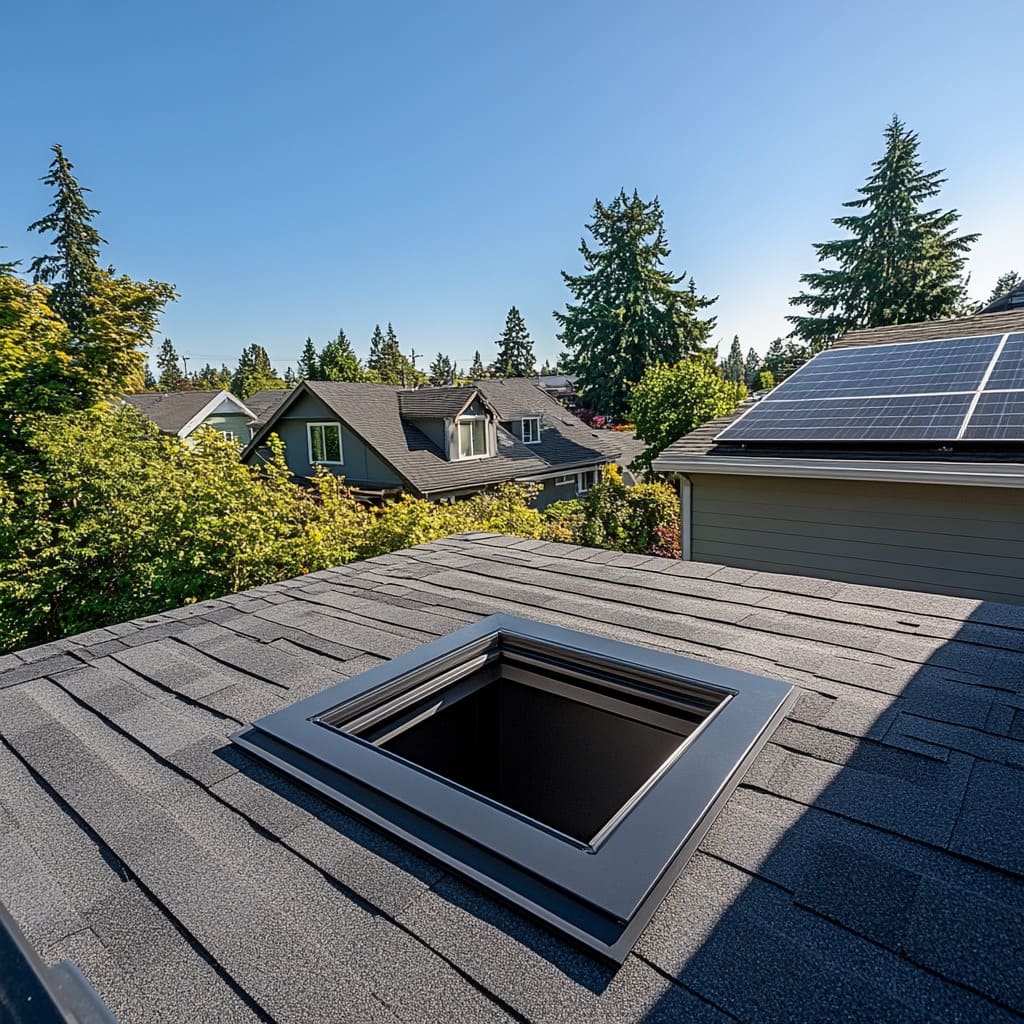
One of the best things about roof hatches is how subtle they are. Their low-profile construction allows them to sit flush—or nearly flush—with the roofing surface. From street level, they’re often invisible.
Many models use concealed hardware and hinges for a cleaner look. This minimizes distracting details, a must in buildings with visible or accessible roofs, like multi-unit properties or rooftop decks.
Keeping the roofline consistent is important for large-scale projects like commercial buildings or apartment complexes. Roof hatches preserve that uniformity while adding functional access, so you get practicality without sacrificing the structure’s look.
Material and Design Options To Suit Every Project
Different buildings call for different hatch materials—and there are plenty to choose from.
- Galvanized steel is durable, cost-effective, and suitable for most standard installations.
- Aluminum is lighter and resists corrosion, making it ideal for humid or coastal environments.
- Stainless steel offers reliable strength and corrosion resistance for high-demand or industrial settings.
For energy-conscious buildings, thermally broken hatches are designed with a built-in thermal barrier to prevent heat loss and condensation.
Most manufacturers also offer custom sizing or finishes for architectural applications. These are especially useful when the hatch needs to match a specific roof design.
Whether you need something basic or high-end, there’s a material and design combo to match a building’s needs.
Factors To Consider When Choosing a Hatch for Your Roof
When selecting the right roof access hatch, keep these key factors in mind:
- Size: Choose a size that fits your access needs—personnel or equipment.
- Usage Frequency: Daily access may require sturdier or more comfortable models.
- Roof Type: Some models are better suited to flat roofs than pitched ones.
- Environmental Conditions: Consider insulation, corrosion resistance, and weather exposure.
Evaluating the specific use case will help you select a hatch that meets practical and aesthetic expectations, saving you time and money down the road.

